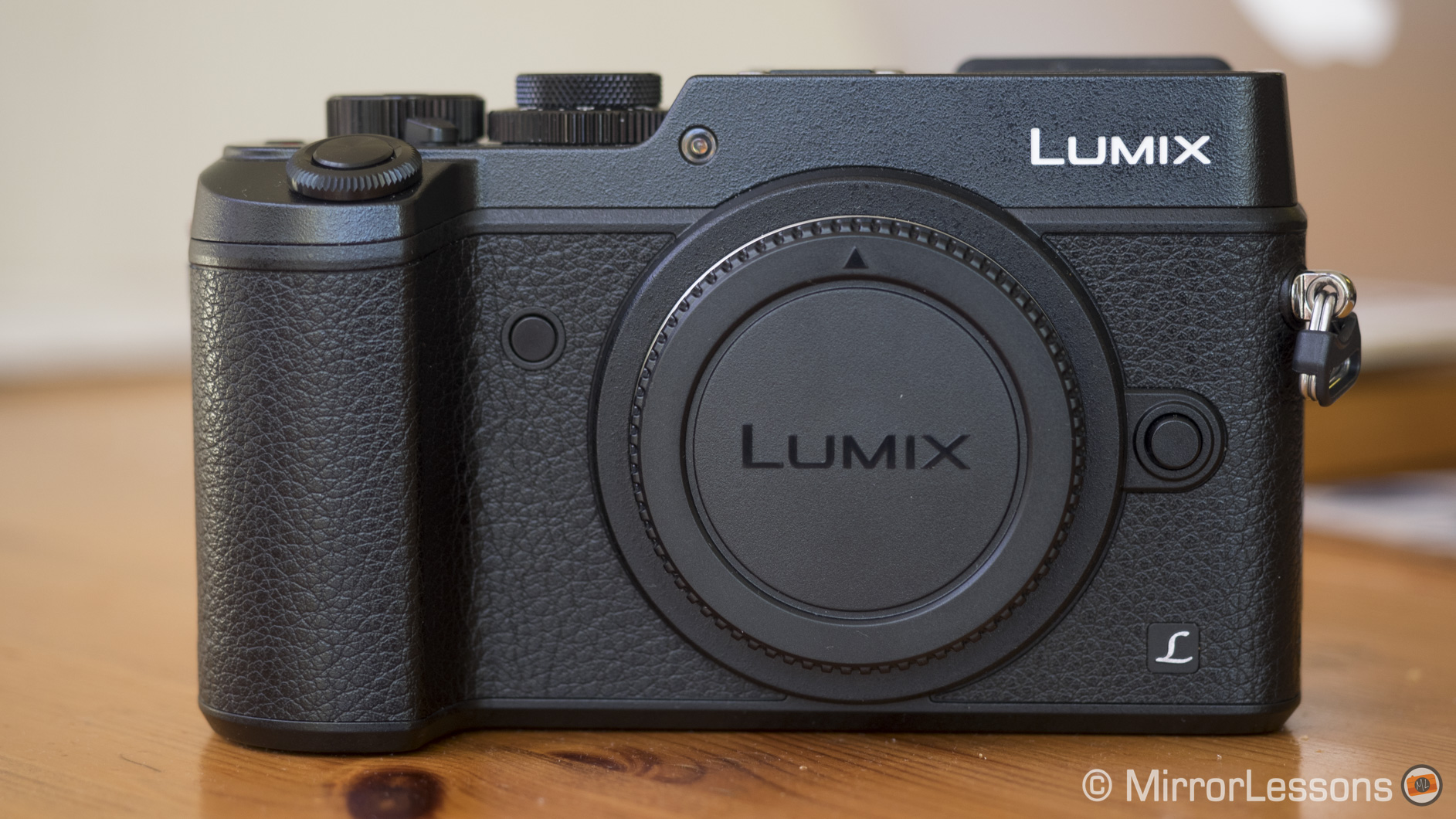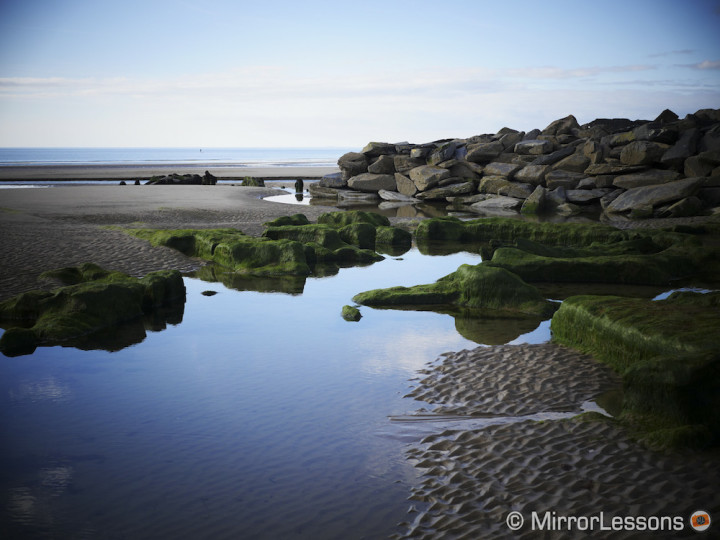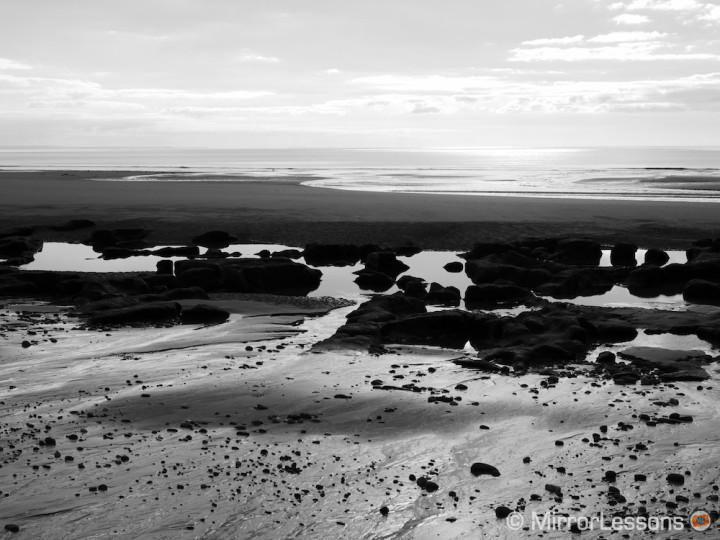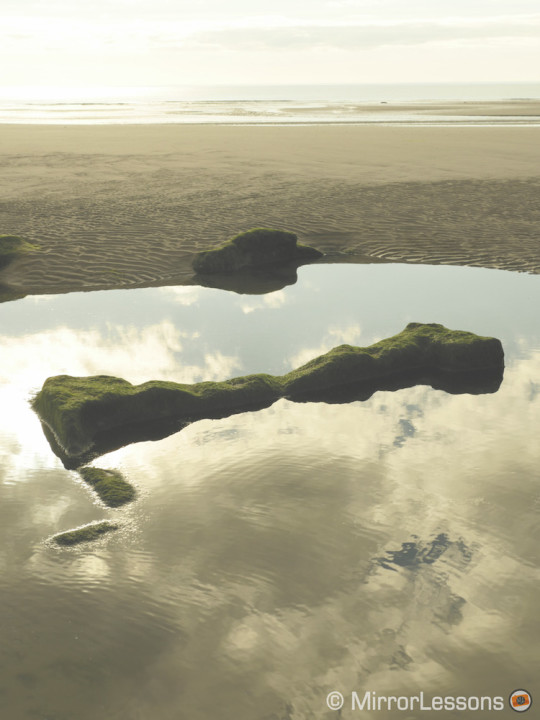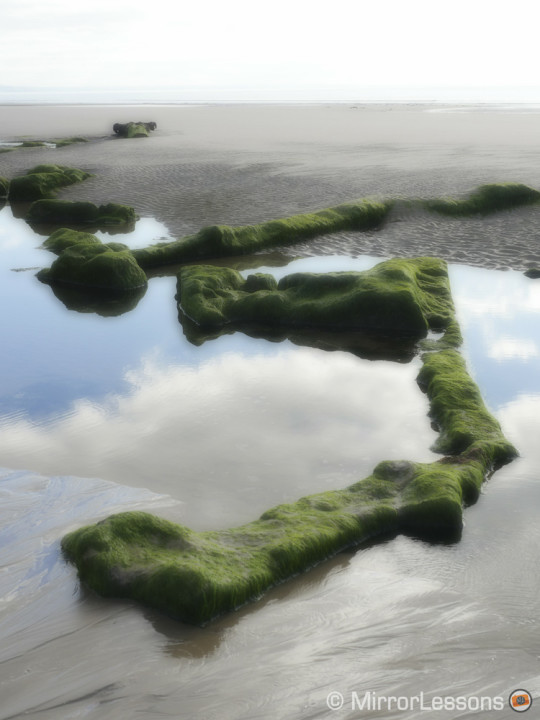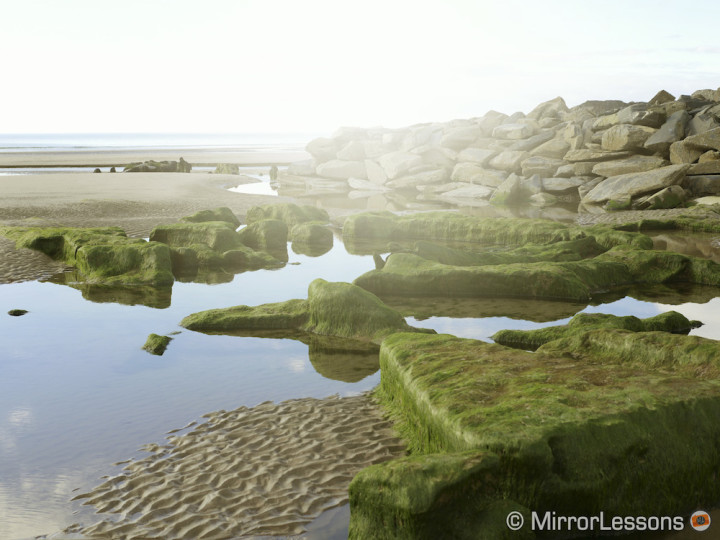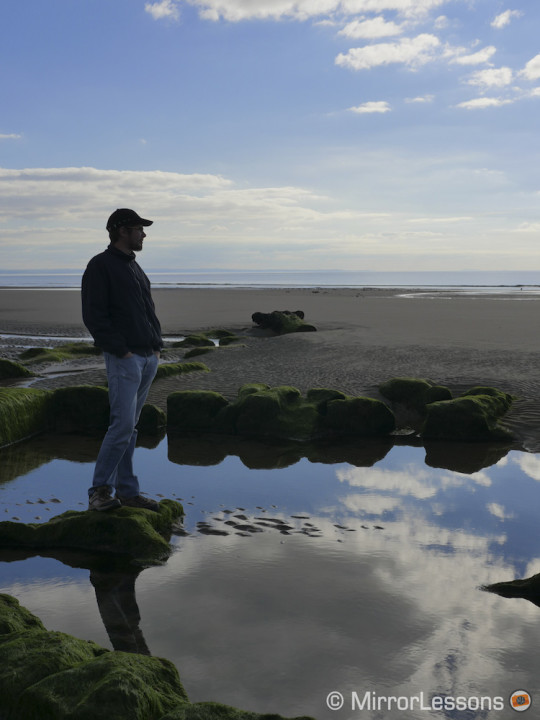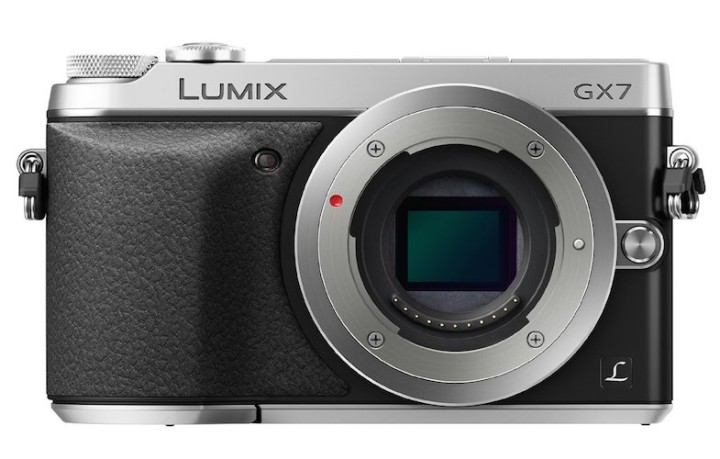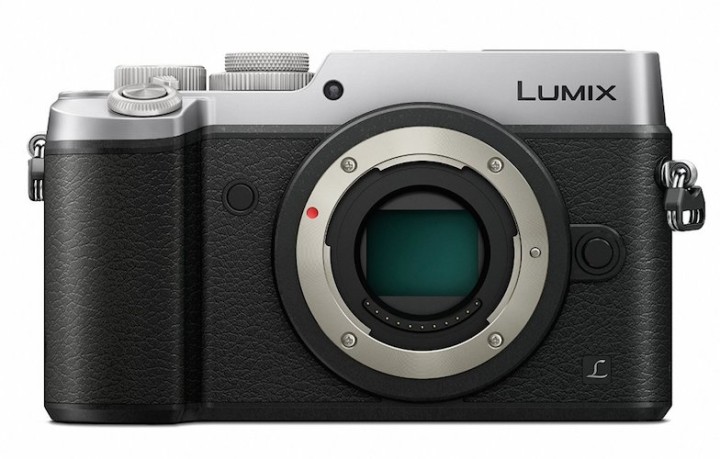Panasonic has always been considered more of a generalist company than a serious photography brand, an issue that hasn’t been helped by the company’s involvement in sectors as diverse as beauty products and home appliances. Indeed, very few people realise that “Lumix” (the company’s name for its series of digital cameras) is an individual product brand of Panasonic at all.
Proof of Panasonic’s intention to establish itself as a photography brand is revealed no more clearly than in the recent release of the Lumix GX8, the company’s first serious stills camera designed to compete with the likes of the Olympus OM-D E-M1, Fujifilm X-T1 and Sony A7II/rII. Complete with all the latest bells and whistles from Lumix within the body of a rangefinder, one could certainly call it “the GH4 revamped for stills.”
Hands-on video
When we visited the Panasonic Lumix event held in association with the National Trust at Penrhyn Castle, we filmed a quick hands-on video with the GX8. Be sure to give it a watch before you start reading this review!
Design, Ergonomics and Ease of Use
The Lumix GX8 features a magnesium alloy chassis with a rubber coating that covers everything but the top plate of the camera.
If you are coming from the Lumix GX7, the first thing you’ll notice about the GX8 is the increase in size, weight and robustness. Whereas the GX7 was (and still is) a perfectly valid stills camera with many advanced functions, it lacks the rock-solid look and feel of the GX8, which is further reinforced by its dust and splash-proof build and substantial grip.
Ergonomically speaking, the GX8 is very functional. It fits nicely into the palm of your hand and is comfortable to hold for long periods of time. While I find the ergonomics of the OM-D E-M1 a little more comfortable because of the shape of the grip, the GX8’s design is easily on par with other high-end mirrorless offerings like the Fujifilm X-T1 or Sony A7rII in terms of pure comfort.
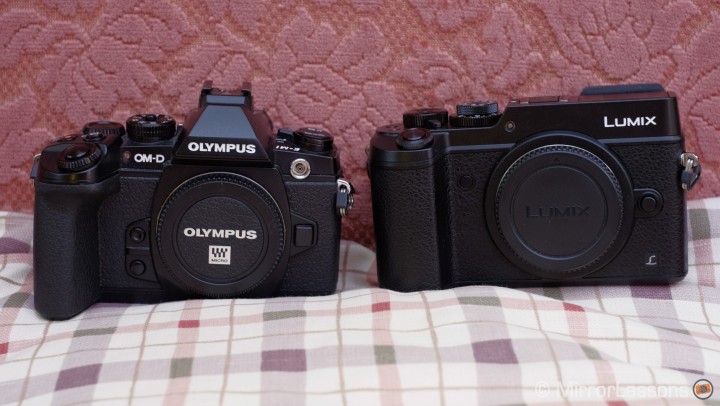
The front of the camera is quite minimalistic, featuring an interchangeable mount, the aforementioned grip, and one Function button (Fn7). I personally don’t use this button at all because it is barely distinguishable from the body. Had they made it protrude a little more or given it a significantly different texture, it would be easier to find.
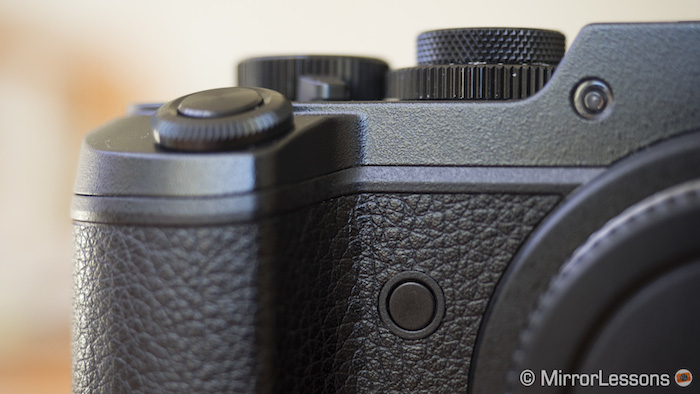
On top of the grip, you’ll find the shutter release button and front dial. The camera has both a mechanical shutter and electronic (silent) shutter.
Note about the electronic shutter:
Whereas the mechanical shutter of the GX8 goes up to a very decent 1/8000s, the electronic shutter goes one step further with a speed of 1/16000s. This makes it very useful for shooting in bright light at very fast apertures. On the flip side, the electronic shutter can only go as slow as 1 second, while the mechanical shutter will stay open for up to 60s (and up to 30min in bulb time).
The electronic shutter is perfectly silent and the ideal tool for discretion, and it also circumvents shutter shock. However, for shots involving movement, you may come across rolling shutter artefacts.
The top plate is home to the movie record button, Fn1 button, rear dial with the Fn13 button in the centre, on-off switch and mode dial. The mode dial is surrounded by a very handy exposure dial, a first for interchangeable Lumix cameras and a feature I hope continues to appear on future models.
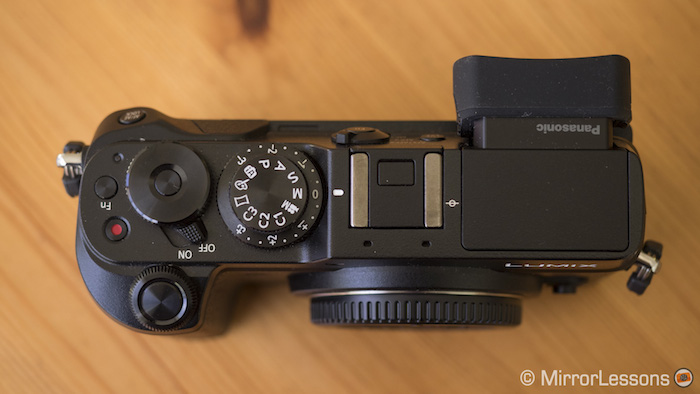
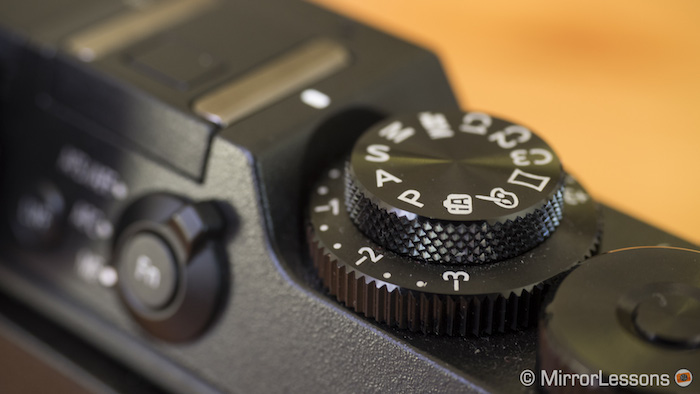
Note about the mode dial:
In addition to the traditional PSAM modes, you also have access to the following features on the mode dial: Movie Mode, Intelligent Auto, Creative Control (filters), Panorama, and three Custom Modes that you can customise with your favourite settings.
It puzzles me that Panasonic and many other mirrorless brands continue to dedicate a spot on the mode dial of their high-end cameras to features that would generally be of interest to entry-level users. For instance, I personally think it would be much more useful to allot a spot to 4K Photo (discussed later on) instead of, say, Creative Control.
On the rear, we encounter the Focus switch with AFS, AFF, AFC, MF options. It encircles the Fn5 button and flanks the LVF (Fn6) button. The AF/EF Lock button is nestled within the thumb rest on the far right-hand side.
Beside the screen is a traditional four-way control pad with AF Mode, White Balance, ISO and Drive Mode assigned to each button. I generally prefer to customise the four buttons of the control pad so that they automatically change the AF point, especially when I’m shooting with my eye at the viewfinder. This can be done by turning Direct Focus Area to On in the menu.
Surrounding the control pad, we find the Q Menu (Fn2), Playback, and Disp. buttons on top, and the Delete/Back (Fn3) and Fn4 buttons underneath.
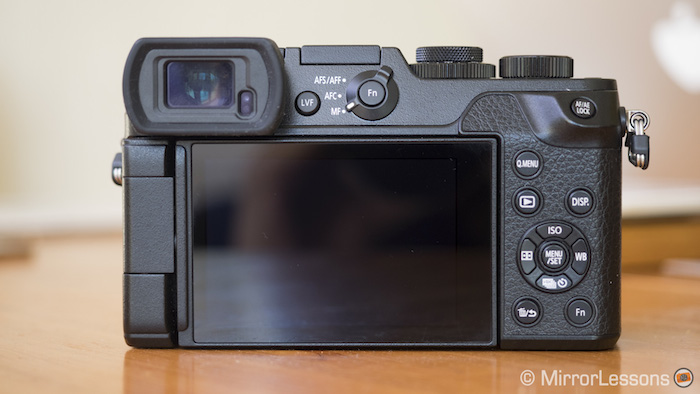
The touchscreen is bright and crisp with an 1040k-dot 3-inch OLED monitor. It works very well for situations where you’re less likely to use the viewfinder, such as portrait or landscape photography. Along with letting you choose the position of your AF point, it also allows you to change its size, choose options from the menu, pick between an extra five on-screen Fn buttons, and more.
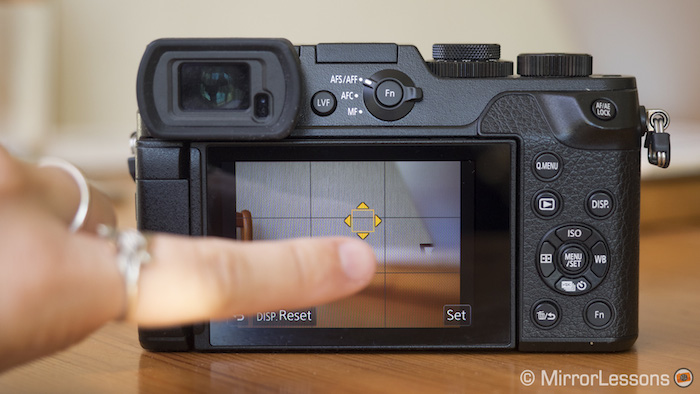
The screen is also articulating, which is a bonus for both stills and movie shooting. You can flip it out, rotate it by 250 degrees, or lock it in place with the touchscreen facing either outward or inward. It is a great asset for low or high-angle photography or when you want to check your composition while filming for example.
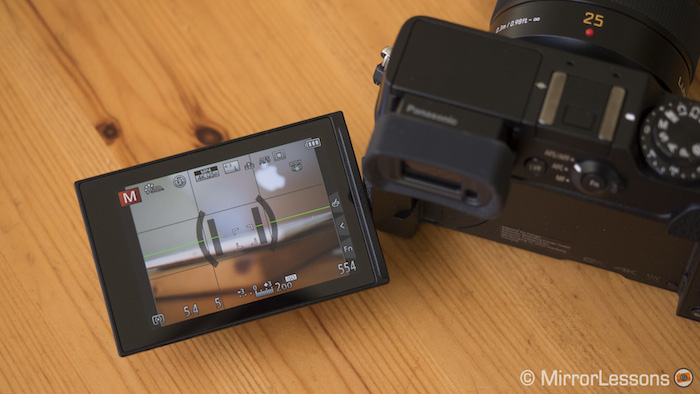
A feature inherited directly from the GX7 is the tilting OLED electronic viewfinder (EVF). This viewfinder has 2,360k-dots of resolution with 0.77x magnification and can be tilted up 90 degrees. I admit that I rarely use this feature but it can be useful if the glare on your monitor prevents you from viewing your composition.
Overall, the viewfinder experience is excellent on the GX8. It is bright and large with a high refresh rate and good performance even in low light. The eye cup is also very comfortable.
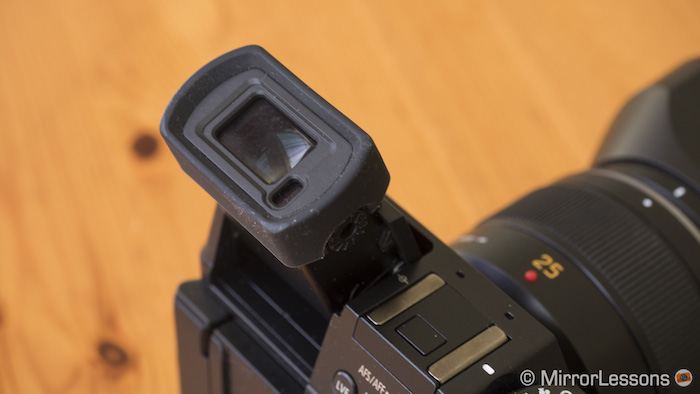
GX7 owners may notice that the GX8 has done away with the pop-up flash to make more room for buttons and dials, which was a wise choice in my opinion. Plus, since the hot shoe remains, you can always attach an external flash, as well as other accessories.
The GX8 also has a mini HDMI port, AV-out/Digital socket and a 2.5mm external mic input. Since most external microphones require a 3.5mm input, you’ll need an adapter.
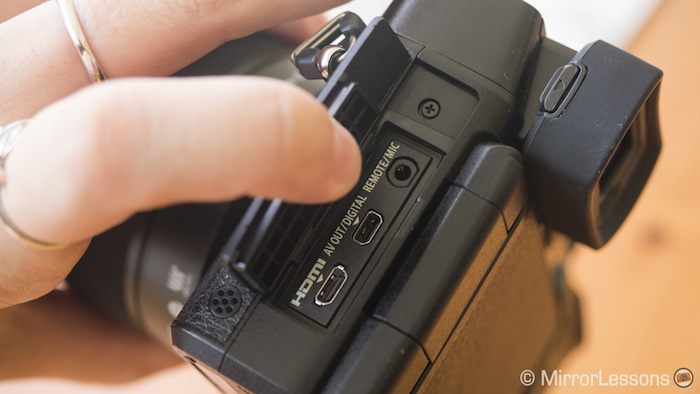
As for the menu, I’ve said it before and I’ll say it again: the Lumix menu is easily the most intuitive out there. You won’t find confusing nomenclatures, functions in sub-menus where they shouldn’t be, or strange text and colour combinations that make your eyes boggle after too much menu digging. Perhaps the only menu layout that competes is Samsung’s, which makes sense given their high involvement in the mobile phone industry.
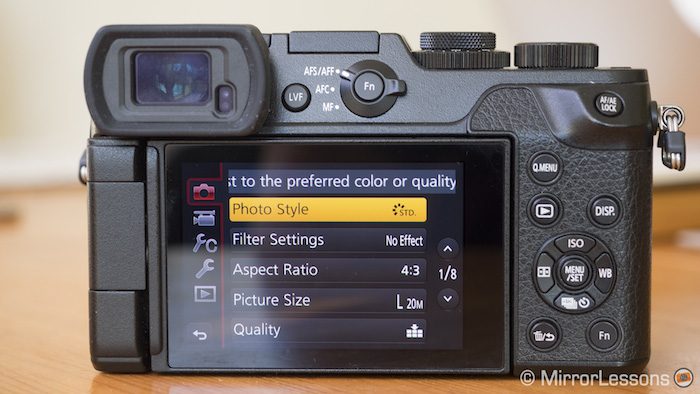
The battery life of the GX8 can last a day or more as long as you shoot stills. As soon as you start shooting 4K Photo and video, it will diminish much more quickly. For example, I spent five hours in the Ynys Hir natural reserve shooting 4K Photos of insects in flight and the battery was dead by the end of the outing.
Image Quality
Now that we’ve arrived at the image quality section, I’d like to take this opportunity to remind you that our reviews are performed in the real world, not in laboratory. While there are many great websites out there that use charts and graphs, we prefer to focus on the tangible results in front of our eyes, be it on a computer screen or in print.
With that said, let’s have a look at the image quality you can get from the GX8!
The Lumix line-up is no stranger to being at the vanguard of technological advances. Much as the Lumix GH2 was the first Micro Four Thirds camera to use a 16MP sensor back in 2010, the Lumix GX8 is the first Micro Four Thirds camera to incorporate a 20MP sensor. This effectively makes the GX8 the Micro Four Thirds camera with the highest resolution on the market (barring of course the OM-D E-M5 II and its High Res Shot mode, which gives you a 64MP Raw file after combining 8 shots).

Now, the difference between 16MP and 20MP is not huge, and in my experience comparing files from the E-M1 and GX8, I haven’t seen a difference that would justify choosing the GX8 over the E-M1, or any other 16MP Micro Four Thirds camera, just for image quality. Perhaps you’d see slightly more detail in very large prints but that’s where the real-world advantages begin and end.

The truth is that both sensors can deliver excellent results, even in print. For example, a few weeks ago at Penrhyn Castle, we saw some gorgeous prints from the GX8 taken by photographer Ross Grieves that were 44-inches on the long side, but we’ve seen equally beautiful prints of a similar size from cameras such as the OM-D E-M5, Lumix GX7 and Lumix GH4, all of which have 16MP sensors.
In short: you should want the GX8 for more reasons than just the 20MP resolution!
Resolution, High ISO, DR and Long Exposures
So, how does the sensor perform out in the real world? As has been my experience with all Micro Four Thirds cameras, the results are excellent. With the right lens, you can achieve sharp, punchy and vibrant images with lots of detail. With the white balance set to Auto, I do sometimes find that the colours are colder than those from other brands such as Olympus or Sony but this can be adjusted either in-camera or in post production.


The dynamic range is very good overall, though I’ve found it is easier to recover details from the shadows than from the highlights. For this reason, I always err on the side of caution in very contrasty situations and underexpose my images by 1/3 of a stop.

Opened shadows and reduced highlights in Lightroom
Despite the extra resolution, the high ISO performance remains comparable to that of previous Lumix cameras and other Micro Four Thirds sensors. Noise control and detail retention remain very good up until about 1600, with the results still being useable up until 3200. By 6400, the additional noise and loss in detail due to smudging make the images appropriate primarily for web use. I would avoid 12800 and 25600 unless absolutely necessary.


As for long exposures, I can report that the resulting images are very clean and do not show any sign of irregular noise. Below you can see an astrophotography example I took at 20s with the M.Zuiko 12-40mm f/2.8.

If you are interested in reading a full comparison between the image quality of the GX8 and a 16MP Micro Four Thirds sensor, be sure to check out our dedicated article: Comparing the Panasonic GX8 and Olympus OM-D E-M1 – Sensors and stabilisation.
Creative Control, Panorama and In-camera HDR
The GX8 also incorporates the traditional Creative Controls, Panorama and in-camera HDR modes found on other Lumix cameras. All three functions only affect the JPGs, not the Raw files.
There are 22 different creative effects in total including old favourites such as retro, sepia, monochrome, toy effect and more. Below you can see a series of examples:
In Panorama mode, you can change the panning direction (right, left, up, down) and the picture size (wide or standard). Overall, the camera does a good job of stitching the various images together but be aware that moving subjects in the frame will create artefacts.

As for in-camera HDR, you can bracket three shots at a difference of 1, 2 or 3EV. You must remain very steady during the burst if you use a slow shutter speed, since any movement will cause the images to misalign. An alternative to in-camera HDR bracketing is manual HDR. In this case, you can bracket 3, 5 or 7 Raw files in a burst with a difference of 1/3, 2/3, or 1EV and manually merge them in post-production.
Autofocus Performance
The Lumix GX8 is endowed with Panasonic’s Depth from Defocus autofocus, which is a contrast-detect autofocus system. Put simply, this new system allows the camera to determine the camera’s distance from the subject by evaluating two images with different depths of field.
The camera provides three focus modes (AFS/AFF, AFC and MF) and six different AF modes (Face/Eye Detection, Tracking, 49 Area, Custom, 1-Area and Pinpoint).
Shooting static subjects in S-AF (Single AF) mode
For static photography in AFS mode, I found the autofocus very fast, accurate and reliable in both good and poor light, which is no surprise considering the very positive experience I’ve always had with the autofocus on Lumix cameras. Since the autofocus system works down to -4EV, the camera has less difficulty focussing in very poor light than other cameras might. It even has a Starlight AF mode that automatically activates when you take pictures of the stars. In my experience, it seems to work very well.
In AFS mode, I generally use the 1-Area mode so I can choose my focus point with precision but 49 Area or Custom can also be useful for landscapes or when there is more than one subject in your scene.


Shooting action in AFC (Continuous AF) mode
When shooting action, the autofocus performance of the Lumix GX8, and any camera for that matter, will ultimately depend on the lens you choose. If you have a high-end constant aperture zoom, your hit rate will certainly be higher than with a cheaper zoom.

The Tour of Britain 2015
To perform the most complete test possible, I used the GX8 with both the professional 35-100mm f/2.8 zoom and the 14-140mm f/3.5-5.6 for a variety of action genres including a cycling event, a triathlon and bird photography.
It shouldn’t come as a surprise that the Depth from Defocus autofocus system performed better with the 35-100mm. My hit rate at the cycling event, where the cyclists were coming straight toward me or on a diagonal at speeds of 30-40 MPH, was about 50% in focus shots, 40% slightly blurry shots and 10% out of focus shots. In this situation, there was a lot of contrast (the cyclists were wearing bright clothes) which certainly helped the contrast-based AF system.


With the 14-140mm at the same event, the results weren’t as good. The number of in-focus, slightly blurry and out-of-focus shots was about equal. This can only be expected from an all-purpose zoom lens. (You can check out my full review of the 14-140mm on the GX8 here.)

The swimming stage of the triathlon delivered similar results when the swimmers were in the water but the autofocus system struggled to lock onto them as they ran into the water because there was very little contrast between the dark swimsuits and the shadow cast by the dark wall. This suggests that the GX8’s DFD AF system still lags behind phase detect systems in situations where contrast is lacking.

The AF struggled to lock onto the swimmers when they were in the shadow of the wall due to the lack of contrast but worked well once they entered the sunny area of the frame.

The running stage was no different to the cycling event or the swimming stage, producing once again a mixed bag of in-focus, slightly blurry and mis-focused shots. In this case, I noticed that the AF definitely seemed to struggle more in backlit situations.


The biggest challenge for the AF system (and for me as a photographer) was shooting red kites in flight at the Bwlch yn Arian nature reserve. Here, not only were the birds soaring and diving at lightning speed but we were also inside a hide where you could not see them very easily until they came close to the ground. I used both the 35-100mm and 14-140mm and ended up with a handful of sharp shots but I was forced to crop since neither zoom was long enough. To this end, the extra resolution of the 20MP of the GX8 actually came in handy.
For this kind of photography, there is no question that both a very effective autofocus system and great knowledge of the subject are required to take really good shots.


In all the aforementioned situations, I found that both Tracking and Custom AF area worked the best with the speed set to either Low (2fps) or Medium (5.5fps). I say Low or Medium because High (8fps) or Super High (40fps for a three second burst) will not give you a Live View of your scene, making it more difficult to track fast-moving subjects. Super High will also reduce the resolution of your images to 5MP (JPG only) and can only be used with the electronic shutter.
For action, 49 Area was often inaccurate because the focus point would jump from the subject to prominent objects in the foreground or background. This would occasionally occur in Tracking mode as well if something very colourful suddenly appeared on the scene.
In Raw/Fine JPG mode, the buffer tends to fill up between 30-37 shots on the first burst depending on the burst speed and the speed of your memory card. Although it will continue to shoot after that, there is quite a delay between each shot. This is why I prefer to use Fine JPG on its own for action photography. Not only will you have room for more images but you’ll also have a much deeper buffer.

As far as mirrorless autofocus systems go, the GX8’s Depth from Defocus fairs well overall but it is rare to be able to take a burst of images without at least a couple of either blurry or out-of-focus shots. More often than not, you will end up with a mixed bag of in-focus and slightly blurry images with a few mis-focused duds.
I generally found that it has less difficulty following slow-moving subjects like runners or swimmers but may falter a little with very fast-moving subjects, especially if you don’t use a professional zoom. It definitely struggles more in situations with backlight or very little contrast, but this can only be expected from a contrast-detect based system.
Using Manual Focus
The GX8 is the perfect companion for manual focussing. You can set it so that a portion of your screen shows a magnified version of your scene when you twist the focus ring on your lens. Since the entire screen isn’t magnified, you can keep track of your composition while adjusting the focus. Additionally, you can choose to activate focus peaking in blue, yellow, green, red or grey at either High or Low intensity. Along with those of the Fujifilm X-T1, the manual focus assists of the GX8 are my favourite for their ease of use and accuracy.
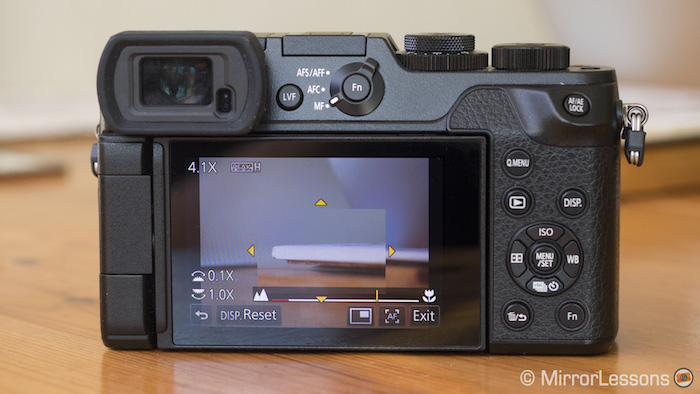
In-body stabilisation and Dual I.S.
The GX8 isn’t the first Lumix camera to have in-body stabilisation – the GX7 claims that title – but it is the first to incorporate a Dual I.S. system that combines the 2-axis stabilisation of Lumix lenses with the 4-axis in-body stabilisation of the camera. According to Panasonic, the result isn’t a 6-axis system – it is simply that the two systems work in conjunction.

Now here comes the question on everyone’s minds: is the Dual I.S. of the GX8 as good as the 5-axis stabilisation of the OM-D series?
In my recent comparison with the OM-D E-M1, I came to the conclusion that the Dual I.S. is capable of performing as well as the 5-axis stabilisation of the E-M1 as long as you use a high-end Lumix lens such as the 35-100mm f/2.8.
It is possible to take sharp hand-held shots with both cameras down to 1 second if you keep yourself extremely steady and use a short focal length. However, neither is as good as the E-M5 II, whose 5-axis stabilisation system makes it possible to take sharp shots even down to 2s (although we’ve only ever managed it once).

As for the GX8’s 4-axis in-body stabilisation on its own, I found that it performed well down to about 0.8s, which is still quite impressive. You only have access to in-body stabilisation when you use non-Lumix lenses or Lumix lenses that lack optical stabilisation.
As is the case with many Micro Four Thirds cameras, you should be aware that shutter shock may occur at shutter speeds between 1/320s and 1/60s. It is far more noticeable at the longer focal lengths than the shorter ones. You can avoid shutter shock simply by activating the electronic/silent shutter in the menu.
It is also important to note that the effectiveness of the stabilisation is also dependant on the user and the environment. If you are cold, tired, trembly, or find yourself in a windy spot without any support like a tree or a wall, your results aren’t going to be as good as they might be in a different situation.
To see my full comparison of the GX8 and E-M1 stabilisation systems, be sure to visit: Comparing the Panasonic GX8 and Olympus OM-D E-M1 – Sensors and stabilisation.
4K Photo
In my opinion, 4K Photo is by far the star feature of the GX8. After making its first appearance on the LX100, it has since become a mainstay on the GH4, FZ1000, G7 and GX8. You can access 4K Photo simply by pressing the down button on the control pad. It is the second option in the Drive menu.
So what is 4K Photo? Well, it is a feature that allows you to extract 8MP stills (JPG only) from 4K footage shot at 30fps in-camera. Since we are dealing with such a high frame rate, it is more likely you’ll capture the precise moment something happens.

And there isn’t just one 4K Photo mode but three to choose between. With 4K Burst you have to hold down the shutter button while you shoot your video, while with 4K Start/Stop, you press the shutter button to start recording and press it again to stop, much as you would when recording a normal video. The final mode is 4K Pre-Burst, which records 30 shots before and after you press the shutter button. All three modes are useful but I prefer 4K Start/Stop as I can continue recording without ever touching the shutter button.

This feature is incredibly useful for any kind of photography that involves unexpected or split-second actions. A few examples I can think of are: a runner crossing the finish line, a child hitting a baseball, a bird scooping up its prey, a bubble bursting or an insect taking off.
I’m not going to go into much depth about 4K Photo here, as I’ve already written this dedicated review with a focus on insects in flight, but I can definitely say that this is one of the most exciting technologies I’ve seen in a long time, and I can’t wait to be able to extract stills with an even higher MP count in the future.
4K and Full HD Video
Video is another feature that will certainly whet the appetite of videographers and hybrid photographers. Like the Lumix GH4 and most of the latest Lumix cameras, the GX8 offers 4K capture at 24p/30fps (NTSC) or 24/25p (PAL) at 100mbps, as well as 1080 capture at 30/60p (NTSC) at 28mbps or 25/50p (PAL) at 20mbps. The maximum recording time in any of these modes is just a second shy of 30min and you cannot switch from NTSC to PAL. Note that the camera lacks the most advanced codec and bitrate found in the flagship GH4 including the 96fps slow motion capabilities in Full HD.
While the quickest shortcut for movie shooting is the red movie button on the top right, the dedicated Creative Video mode on the mode dial will give you the most control over settings such as shutter speed, aperture, ISO, and exposure compensation.
To change the appearance of your footage, you can choose from any one of the Creative Filters (retro, sepia, toy effect, etc.) or Photo Styles (vivid, natural, monochrome, etc.). From the Photo Style menu, you can adjust the saturation, sharpness, contrast and noise reduction of your footage. Additionally, there are two profiles called Cinelike V and D that are better suited to video. The former has more contrast while the latter has a flatter rendering. Unfortunately there isn’t an option for a true Vlog gamma profile.
As for the various assists, the GX8 offers zebra pattern, focus peaking, magnification, and pull-focus. With compatible Dual I.S. lenses, the camera uses electronic stabilisation in addition to the O.I.S. of the lens but it is not the same as the 4-axis sensor stabilisation you have in still shooting mode. This electronic stabilisation only works at 1080p and not 4K. Unfortunately, you don’t have any stabilisation for video with non-stabilised Lumix lenses or M.Zuiko Olympus lenses.
To record audio, you can either use the built-in stereo microphones or buy an adapter for the 2.5mm jack and use an external microphone.
The 4K footage of the GX8 is excellent: sharp with hardly any aliasing or moiré issues despite the camera not giving a full sensor readout. In low-light, the camera is usable up to ISO 6400. Also note that in 4K, the camera crops the sensor more than when recording Full HD and in both cases you have a slightly narrower angle of view in comparison to the still mode.
Below you can see a quick video taken in 4K at 25p in the ancient forest of Nant Gwernol in Wales:
Timelapse, Stop Motion and Snap Movie
Three other features you might enjoy using are Timelapse, Stop Motion and Snap Movie. The first allows you to take a sequence of 0 to 9999 shots with intervals of 1 to 99:95 minutes and encode them into the following resolutions: VGA, 720p, 1080p (50p / 60p) and 4K (24, 25 or 30p). The second (Stop Motion) is essentially the same concept except that you manually press the shutter button for each shot.
Though we didn’t take a time-lapse video for this review, you can see a sample Stop Motion video below that we took with the GX7 two years ago below. The implementation of the Stop Motion feature is exactly the same on both cameras but the GX8 can save a 4K movie file.
The third is a new feature that allows you to pull-focus in a 4s video clip. You can have the footage go from colour to monochrome or vice versa as the focus point changes.
A brief comparison: GX7 vs GX8
Despite the common “GX” designation and rangefinder design, the GX7 and GX8 are two very different cameras both inside and out. Below you can find a short list of the most relevant improvements on the GX8.
Physical Differences
- A more robust, weatherproof body: Some have said that the GX7 feels like a toy camera in comparison to the GX8, and to a certain extent this is true. The GX8 is heavier, more robust and is both dust and splash-proof. It also comes with a more substantial grip that is easier to hold for longer shooting periods.
- A larger OLED viewfinder: Although both cameras have a tilting electronic viewfinder, the GX8’s is larger, brighter and has an OLED screen.
- A flip-out OLED screen: The GX7 had the benefit of a tilting screen but the GX8 has gone a step further with a flip-out screen that turns in all directions, making it useful for movie shooting.
- External mic input: A major oversight on the GX7 was the lack of an external mic input. The GX8 has remedied this with a 2.5mm input, another plus for movie shooting.
Internal Differences
- A new 20.3MP Micro Four Thirds sensor: The GX8 has slightly more resolution than its predecessor (16MP).
- Dual image stabilisation: The GX7 was the first Lumix camera to have in-body stabilisation but it only worked on 2 axes. The GX8 now combines 4 axis in-body stabilisation with the 2-axis optical stabilisation of its lenses to create Dual I.S.
- “Depth from Defocus” autofocus system: The GX8 has inherited the GH4’s Depth from Defocus autofocus system which is faster and more reliable than the GX7’s standard contrast detection autofocus system. You also get a faster burst mode (8fps vs 5fps).
- 4K Photo and Video: The GX8 has the ability to shoot 4K video whereas the GX7 shoots in Full HD. You also get the three 4K Photo modes (Burst, Start/Stop and Pre-Burst).
There is little doubt that purely in terms of specifications, the GX8 is the better camera, but that doesn’t mean the GX7 is no longer a good choice. In the real world, the difference in image quality is marginal and the extra stabilisation and weather-sealing are added bonuses but not essential. If you are already happy with the GX7, I’d only recommend an upgrade in two situations:
- If you shoot a lot of serious video. 4K video shooting along with the flip-out screen, larger grip and mic input are all important assets to videographers.
- If you feel you’d make good use out of the 4K Photo mode.
Conclusion


It has been nearly two months since we bought the Panasonic Lumix GX8 and in a way, I am sorry that the testing period has come to an end. I was, and still am, a huge fan of the Lumix GX7 – in fact, I named it as my favourite camera in a recent survey – and I have grown nearly as fond of its successor. It has everything you could ever want from a digital camera: great image quality, a bright and crisp viewfinder, an articulating screen, lots of external dials and customisable buttons, good ergonomics, and sundry other exciting features such as 4K Photo and video, Time-lapse, Stop Motion and more.
You may be wondering why it hasn’t superseded the GX7 in my books, and in all honesty, it all comes down to the size and ergonomics. I loved the GX7’s stylish form factor, as well as the fact that it was verging on pocketable. It was the kind of camera I was happy to carry around wherever I went.
In the case of the GX8, it is less the kind of camera I’d just pop into my bag or swing around my neck and much more a professional tool I’d trust for serious photography assignments. In fact, were I a working photographer with a wide array of Micro Four Thirds lenses, I could imagine having the GX8 as my main professional body and the GX7 as my back-up/travel camera.
How about you? What are your thoughts about the Lumix GX8? We’re looking forward to hearing from you in the comments section below!
 What I like about the Panasonic Lumix GX8:
What I like about the Panasonic Lumix GX8:
- Feels and looks like the first serious Lumix for professionals who shoot stills
- Highly customisable and easy to use right out of the box
- Great image quality (though the benefits of 20MP over 16MP are minimal)
- Electronic viewfinder is bright, clear and vibrant with almost no lag
- Excellent AF performance in S-AF mode in both good and poor light
- 4K Photo and video are great assets to both photographers and videographers
- Battery life is excellent for still photography
 What I don’t like about the Panasonic Lumix GX8:
What I don’t like about the Panasonic Lumix GX8:
- The grip is good but not as good as that of the Olympus OM-D E-M1
- The accuracy of the Continuous AF could be further improved if it is being marketed as a DSLR replacement
- Battery life could be better for 4K Photo and video
- I personally miss the size and form factor of the GX7
If you are curious to know more about the Panasonic Lumix GX8, we also invite you to check out the following in-depth articles:
Photographing the Super “Blood” Moon Lunar Eclipse with the Panasonic GX8
